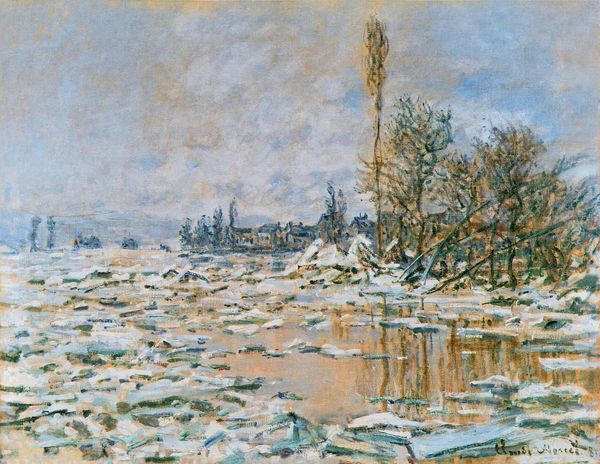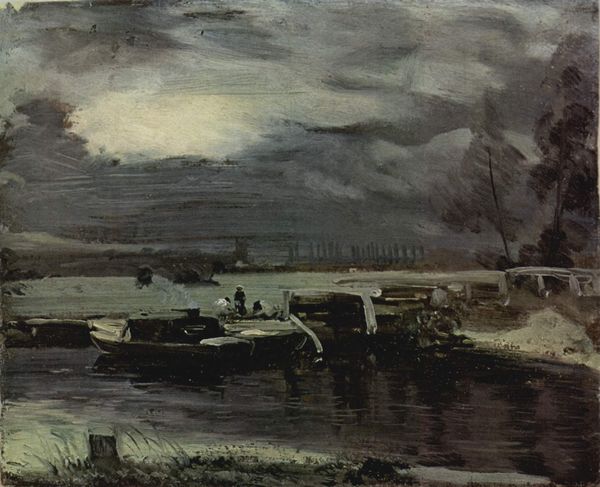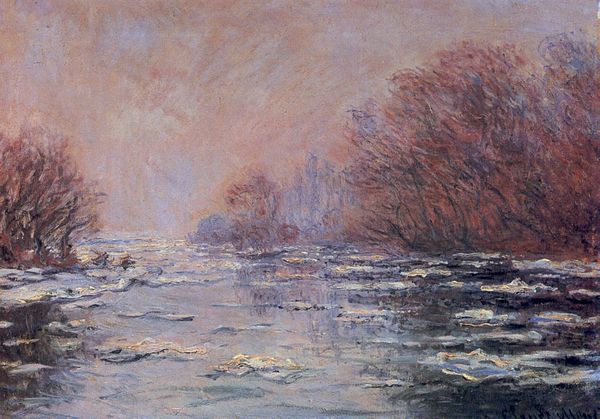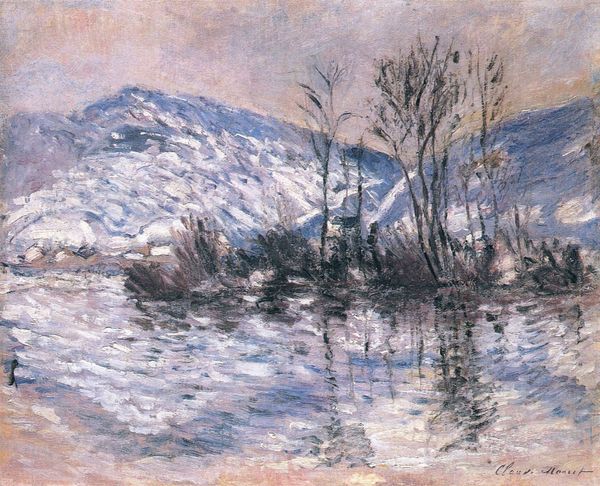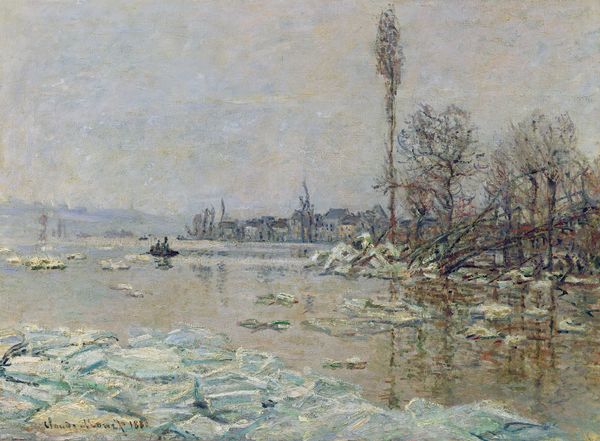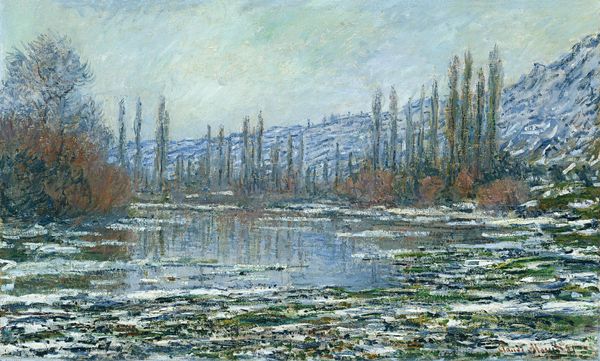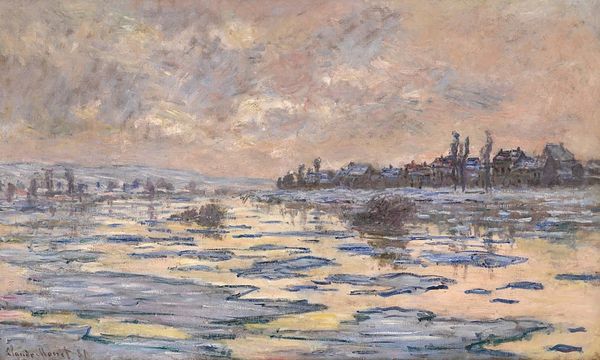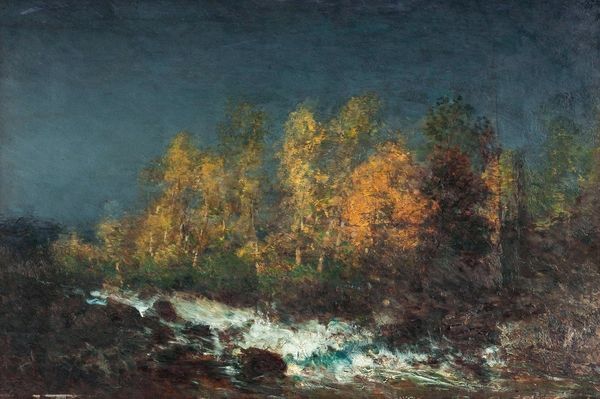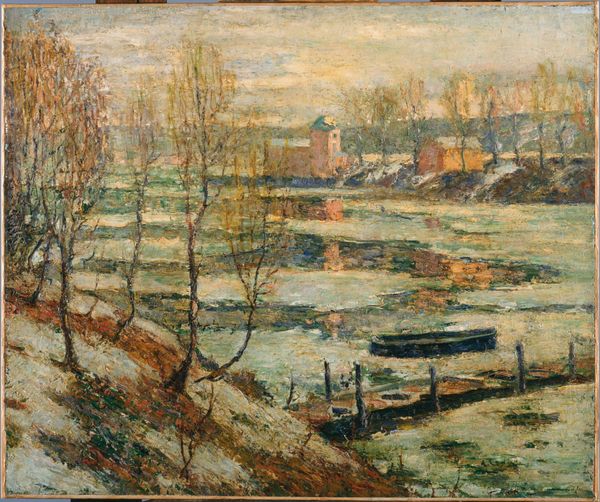
painting, plein-air, oil-paint
#
sky
#
painting
#
impressionism
#
impressionist painting style
#
plein-air
#
oil-paint
#
landscape
#
impressionist landscape
#
oil painting
#
seascape
#
water
#
monochrome
Copyright: Public domain
Claude Monet made this painting, entitled "The Break-up of the Ice," with oil on canvas. In it, you can see a river choked with ice floes. The scene is painted in shades of grey, brown, and white, creating a somber mood. Painted in France, we might consider it as a response to a period of great social and political change. The late 19th century saw the rise of industrialization, urbanization, and new social movements. In this context, the fractured ice could be seen as a metaphor for the breakdown of traditional social structures and the uncertainty of the future. Monet and his impressionist peers mounted independent exhibitions outside the official Salon system, a challenge to academic norms. The painting, with its loose brushstrokes and focus on the fleeting effects of light, reflects a move away from realism and towards a more subjective and personal vision. To understand such a painting, the historian examines not only the art itself, but also the cultural and intellectual context in which it was made.
Comments
No comments
Be the first to comment and join the conversation on the ultimate creative platform.
